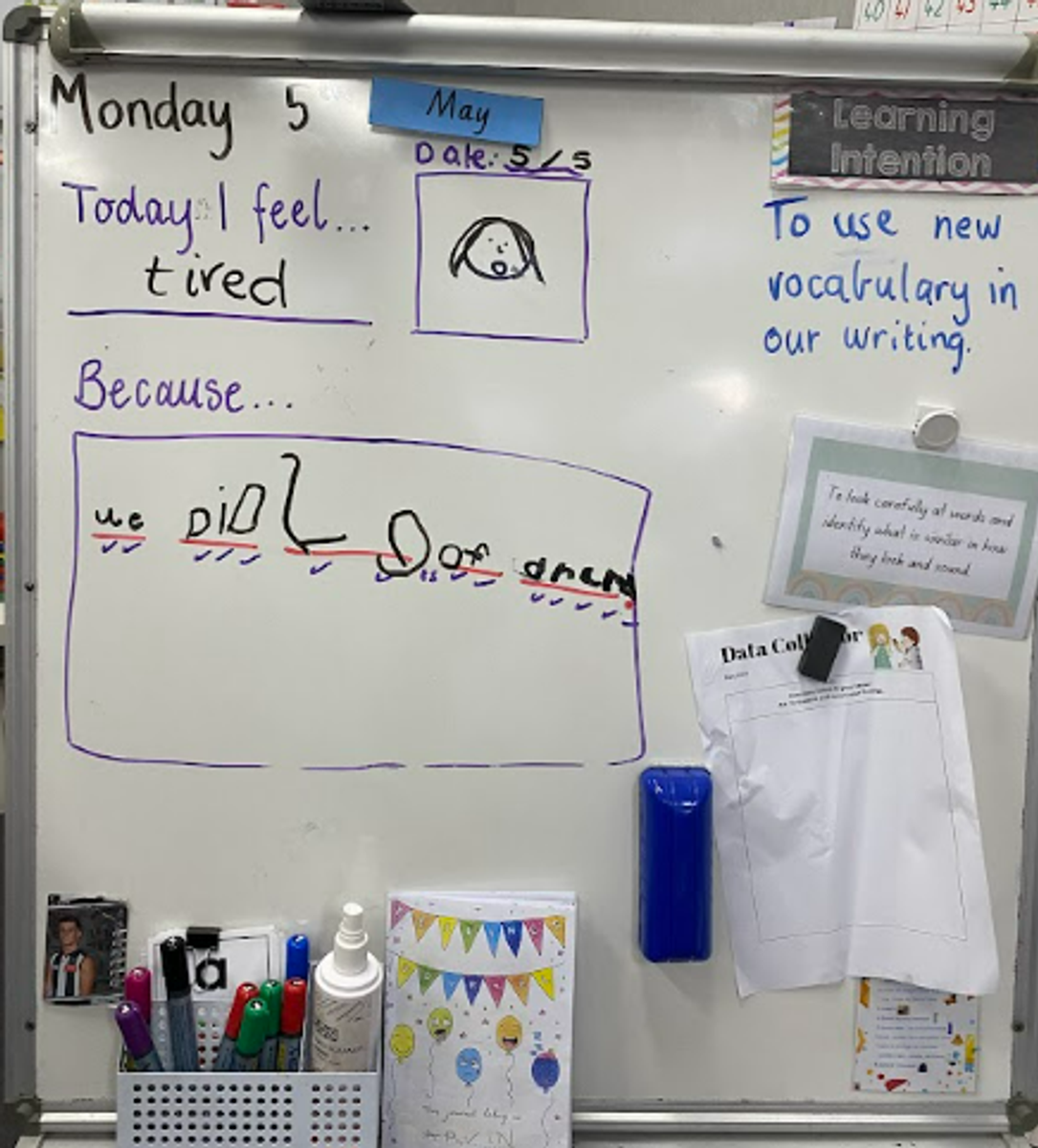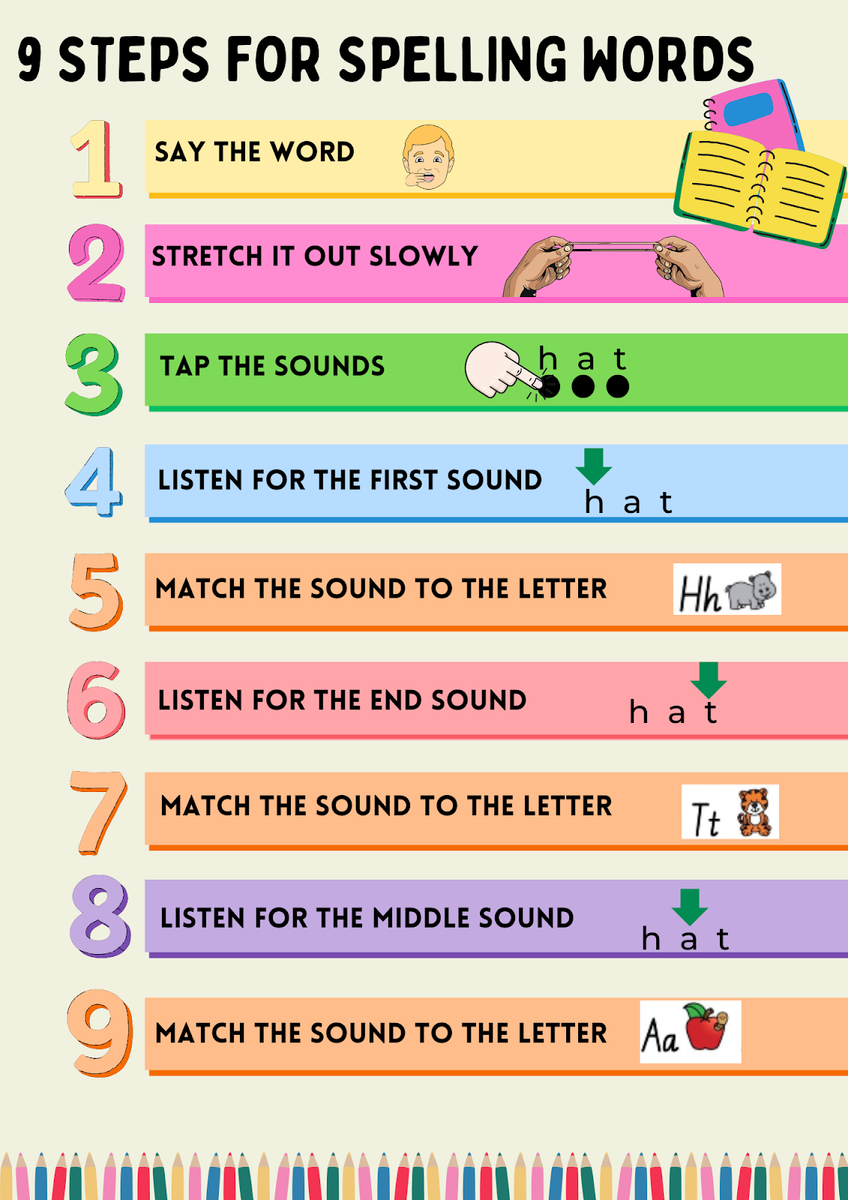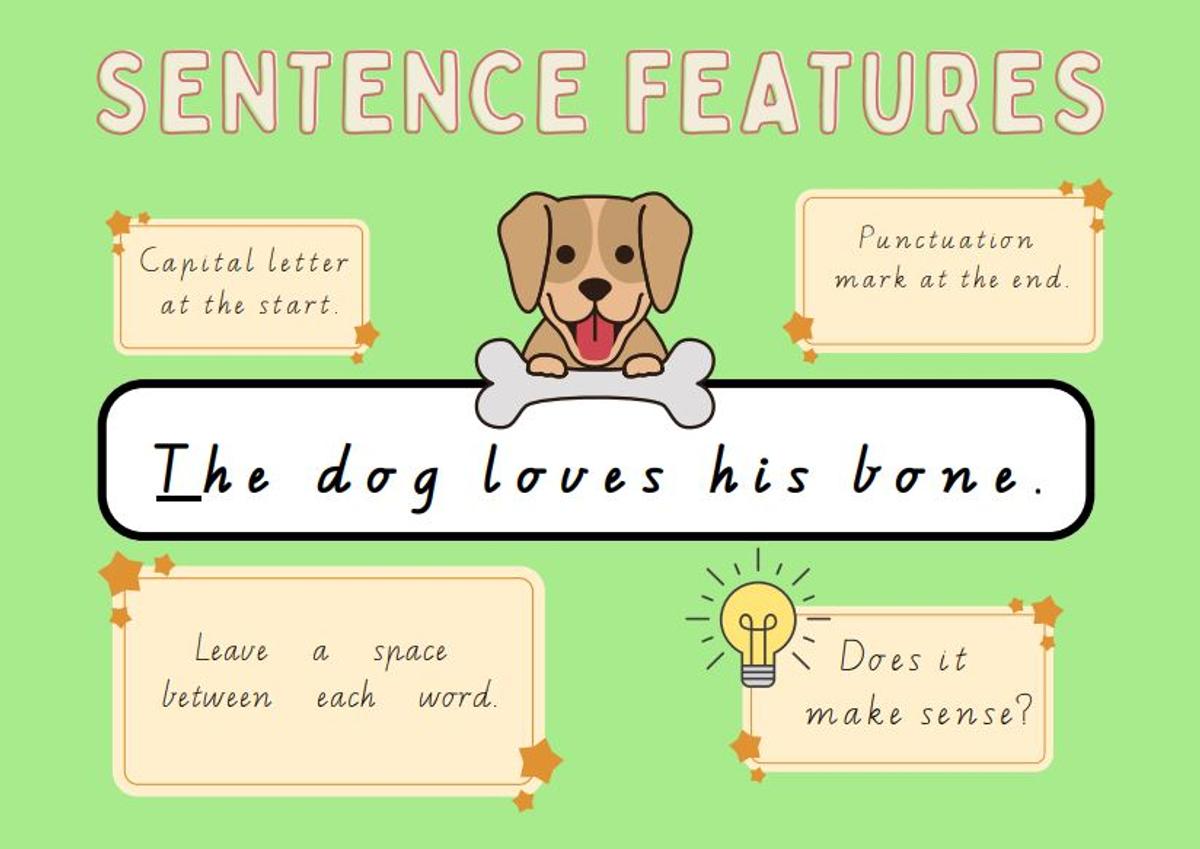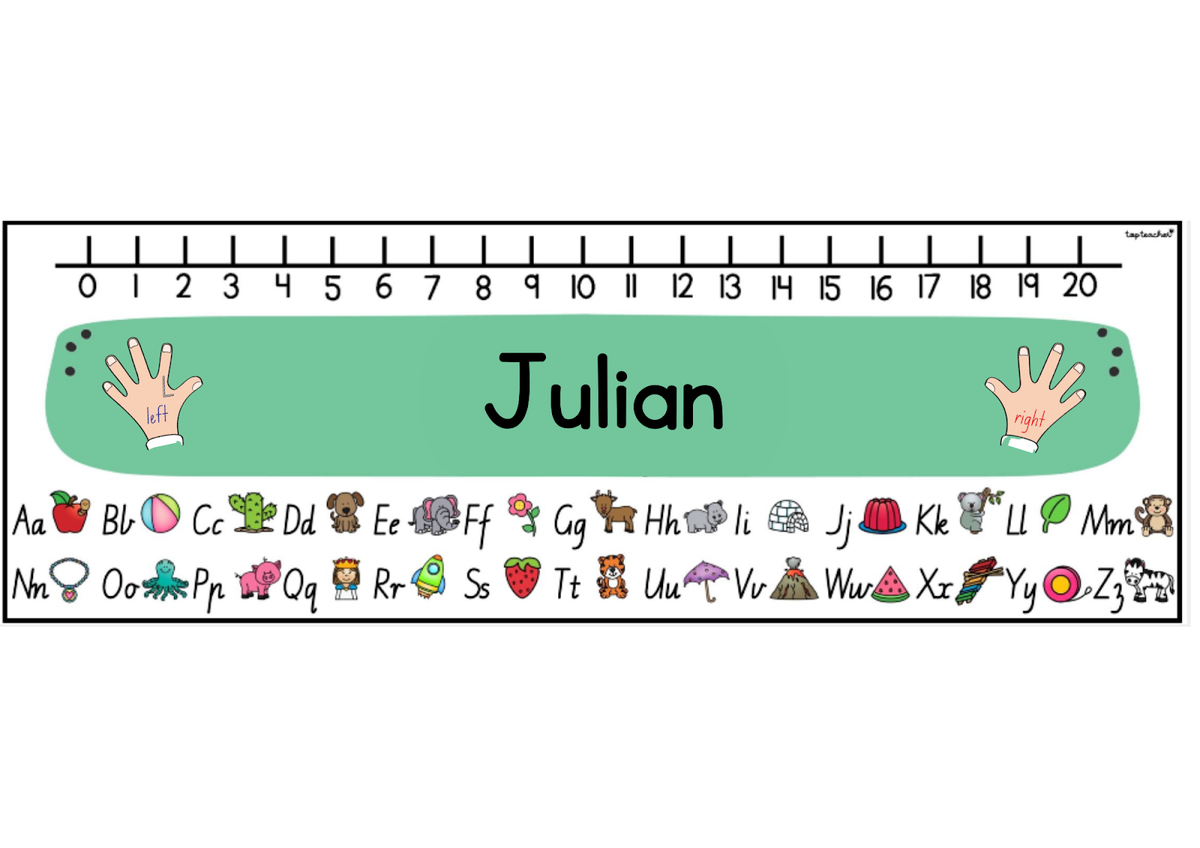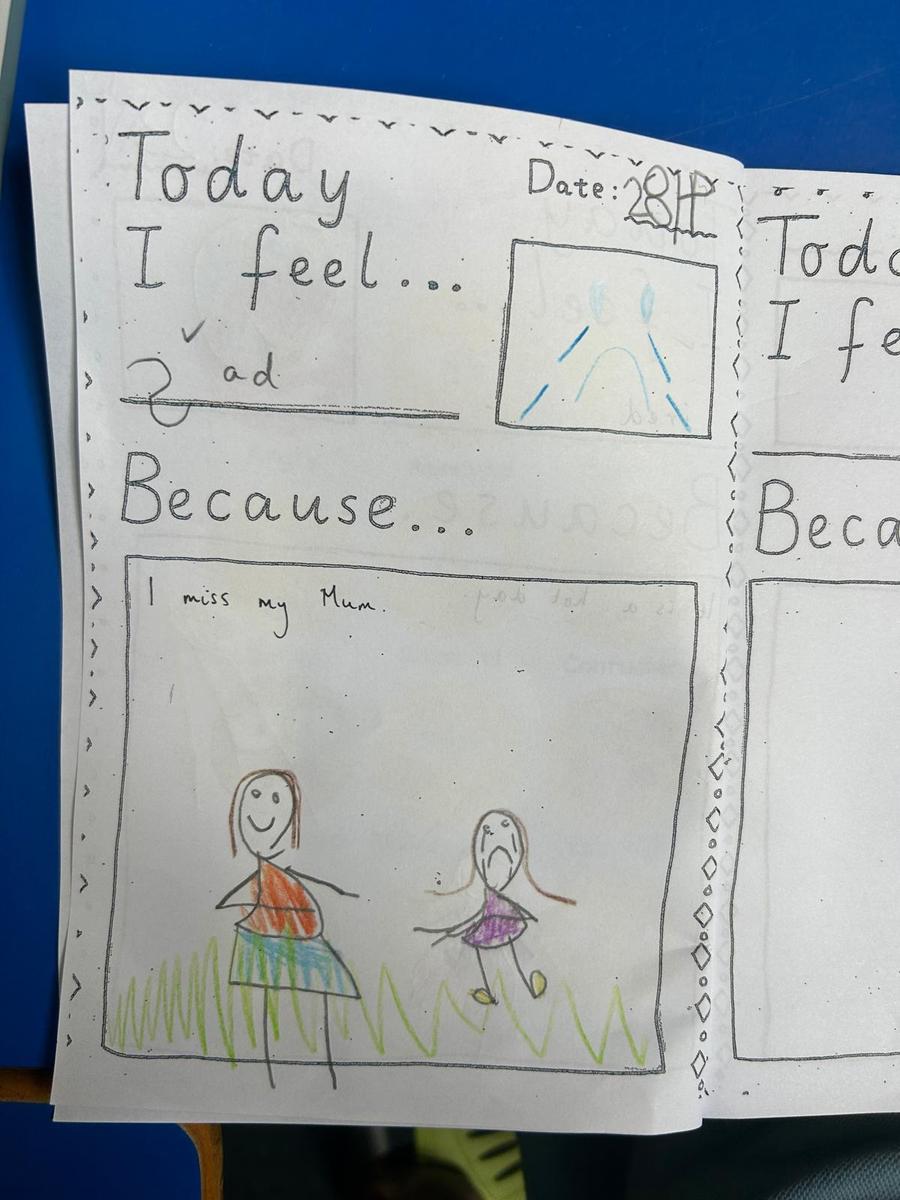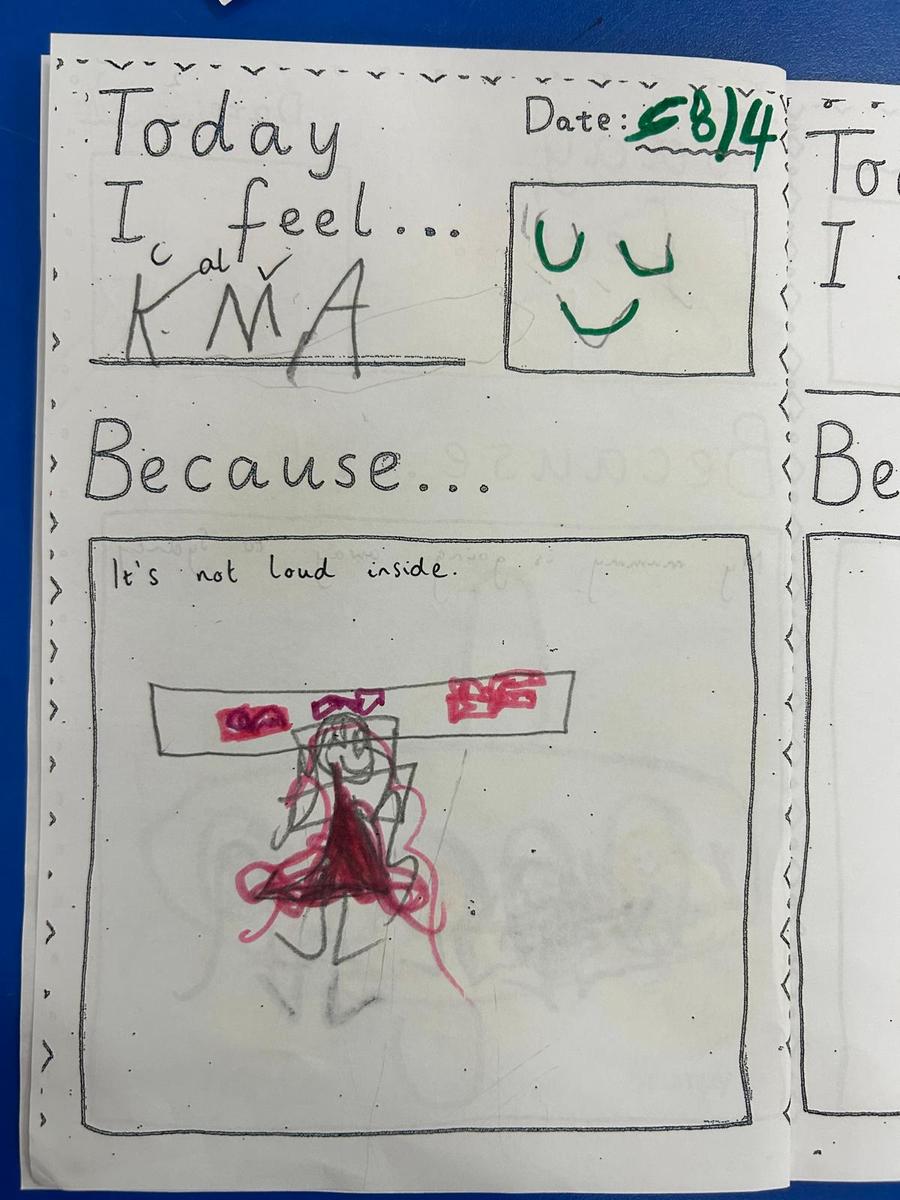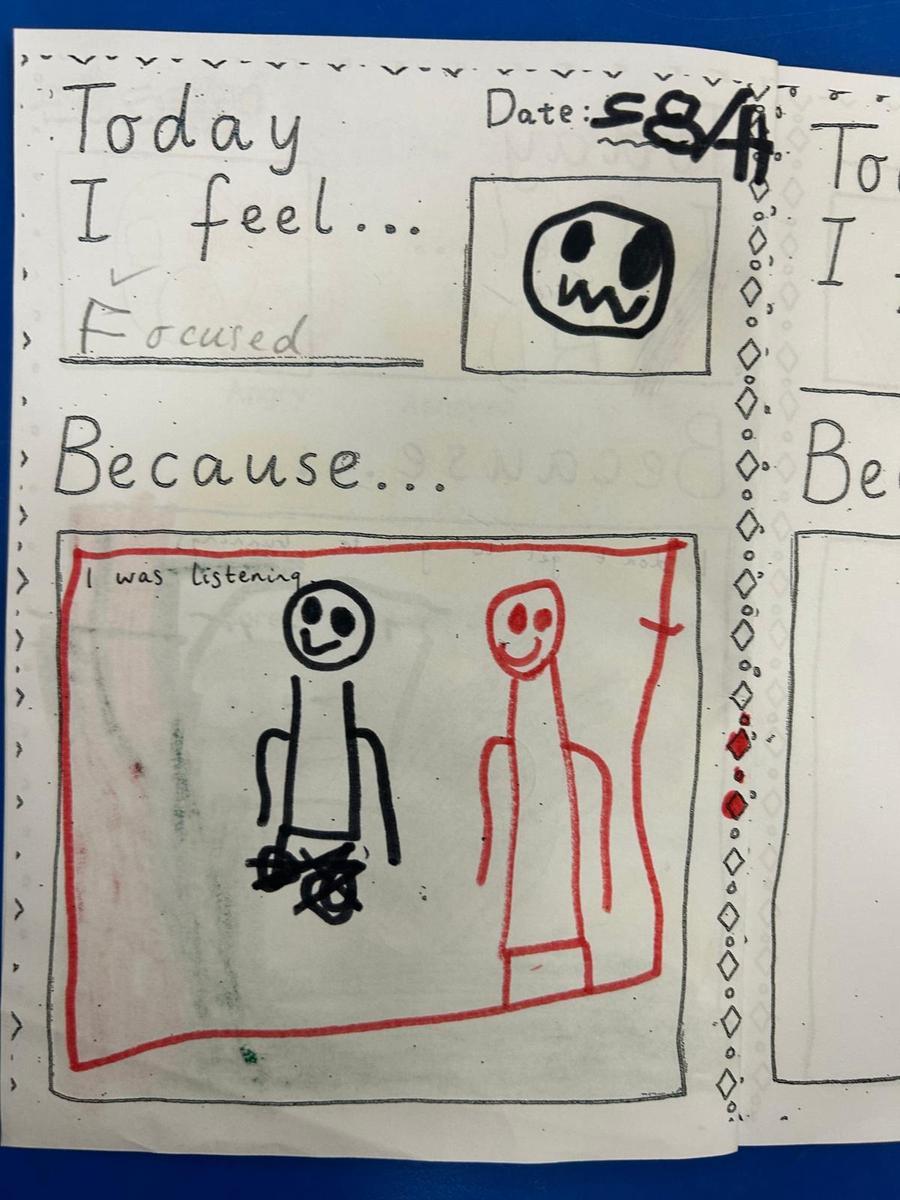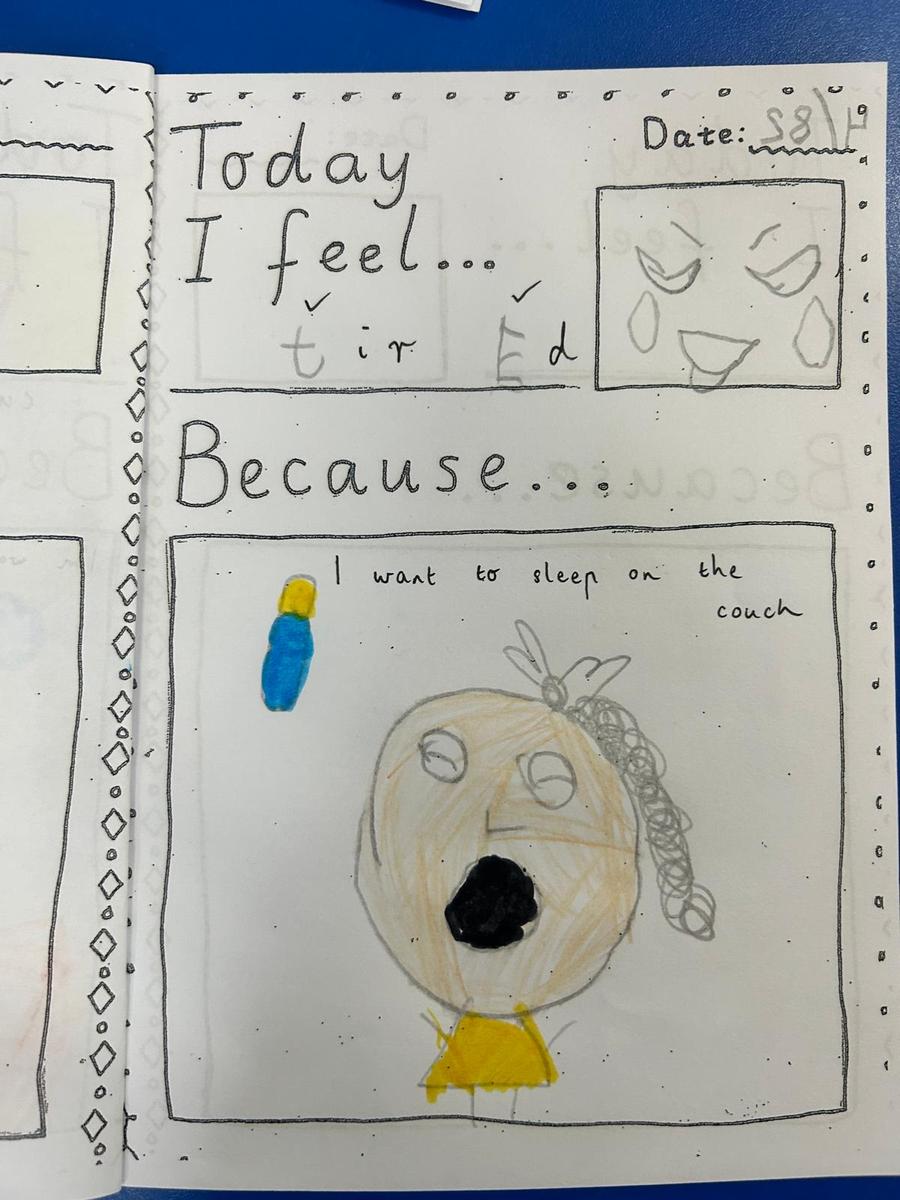Prep Bulletin

A Snapshot into Writing
Learning Overview
In this learning experience, Prep students are exploring our Big Idea driving question: “Why do we feel in different ways?” They are learning to notice how they feel, name their emotions, and explain why they feel that way.
Students are using a range of vocabulary and pictures to express their emotions in their Feelings Journal. This helps them understand their own feelings while also developing their letter and sound knowledge as they write about their experiences.
Learning Intention: To use new vocabulary to show how we are feeling.
Fluency:
The teacher wrote three words on the whiteboard for students to use in a verbal sentence. Students were reminded that they might need to add extra words to make their sentence make sense.
For example: Italian, school, today → Today at school we had Italian.
Whole
To begin, the teacher modelled how to write in a Feelings Journal by sharing how they were feeling that day. As a class, we discussed different words we can use to describe our emotions, and talked about using more interesting feeling words—not just "happy" or "sad".
The teacher then demonstrated how to sound out words using an anchor chart and showed how to use the sound mat to match letters to the initial sounds of new words.
We also talked about what makes a good sentence — including starting with a capital letter, using finger spaces between words, ending with a full stop, and making sure the sentence makes sense.
Small
Then, students wrote in their own Feelings Journal. Each day during the week, they added a new page to describe how they were feeling, using both words and pictures to express their emotions. They practised stretching out words to hear the initial sounds in their new vocabulary to describe their feelings.
Enabling:
Students used visual prompts displayed at the front and back of their Feelings Journal to help them think of new and interesting emotion words. They had a go at writing the initial sound of each word in their sentence to begin building confidence with sound-letter connections.
Explore:
Students continued to build on their skills by writing both the initial and final sounds of words. They used their growing phonemic awareness to attempt more complete words within their writing.
Extending: Students were encouraged to write the whole word and construct full sentences. They applied their knowledge of sounds, spelling patterns, and sentence structure to clearly express their ideas in writing.
In this learning experience, students will work towards:
- Discussing new words to describe different feelings
- Sounding out different parts of a word when spelling
- Following correct sentence structure
- Drawing a picture to match
Examples of Student work:
What you can do now to continue the learning at home from this experience:
- Continue the rest of the Feelings Journal at home
- Practice verbally telling a sentence that makes sense
- Discuss and reflect with your child how their and your day was
- List new words to describe how your child and you are feeling
- Think and write down the initial sounds in words
- Write short sentences together to show your feelings
Alyssa, Ruby and Julian
Prep Team
Alyssa.Thermos@education.vic.gov.au

